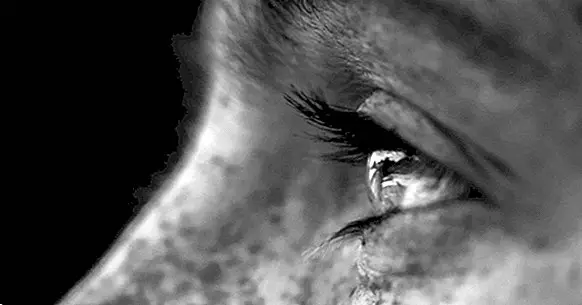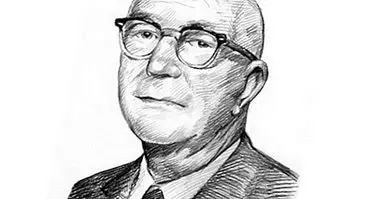Type A personality: characteristics and related factors
Type A personality is a category that is used to describe a particular type of stress response. It is a proposal that emerged in the 50s, when two cardiologists wanted to study the relationship between some personality traits and the development of heart disease.
Currently, personality type A is one of four personality patterns (there are also B, C and D) that have helped us to describe how people relate to each other and how we react to external factors. Then we will see how is a personality type A and what is their relationship with cardiovascular diseases, as well as the research that has linked them.
- Related article: "The main theories of personality"
Character characteristics of type A
The classification that we know as "personality type A" was suggested by American cardiologists Meyer Friedman and Raymond Rosenman in the decade of the 50's.
In very general terms, what they observed was that a set of stress responses, such as competitiveness, the sense of constant urgency and hostility (what they called Personality Type A), are related to a greater probability of developing coronary heart disease and high blood pressure
Although they limited themselves to relating the response to stress and heart disease, their classification has now been retaken and conceptualized as a set of behavioral responses known as Type A personality pattern or Type A Behavior Pattern (TABP, for its acronym in English).
1. Competitiveness
The TABP is characterized by a tendency to competitiveness, which makes the person is always self-critical and seeks to achieve their goals for the satisfaction of meeting them, rather than the fact of enjoying the process.
That is, competitiveness it is related to constant success experiences , because it implies a disciplined personality and allows to meet objectives, but it can also be a generator of permanent stress.
- Maybe you're interested: "6 tricks to deal with very competitive people"
2. Sensation of urgency
It is a personality that seems to be always "against the clock", with an overload of work and with a permanent need to comply with rules and schedules. They are people who do many things at the same time and always "on time", therefore, the moments that are not considered as "productive" can generate a lot of anxiety.
For this reason, they are usually impatient people who they are very involved in their work activities and that tend to overreact in some cases, for example, when things do not go as planned.
3. Hostility
The previous characteristic is related to the fact that the person frequently highlights more the negative than the positive of others and of the circumstances, developing constant frustration, and even lack of empathy, or in the worst cases an aggressive behavior. The consequence is that the person is almost always perceived as hostile or that is always angry.
In short, personality type A implies an orientation to success with a tendency to competitiveness, a sense of urgency and little tolerance for frustration. They tend to be ambitious, extremely hardworking and demanding people who commit themselves to several activities at once, which they consider urgent and therefore generate constant tension.
Other personality patterns: Type B, C and D
While investigating Type A personality patterns, Friedman and Rosenman found that not all Type A personalities were the same. A) Yes, proposed that the type A personality could be A-1 or A-2; and it could also be type B , which included subtypes B-3 and B-4.
To explain it better, let's imagine a straight line in which one end has the letter A and the other end the letter B, and in the middle are the codes A-1, A-2, B-3 and B-4. We would find the personality type A, and the subtype A-1 in the first extreme, which is the most notorious manifestation of the traits that we explained previously.
The A-2 personality is the next segment, and refers to people who are less afflicted and less oriented towards competitiveness. On the other hand, if the person has success orientation, but is calmer than overloaded , then it is a type B-3 personality.
Finally, at the other end of the line we have the type B personality pattern, which is about a person who is perceived as more serene and peaceful (these would be the B-4 type personalities).
However, the research that followed Friedman and Rosenman's studies was not limited to studying Type A personality, so four personality patterns are currently recognized: type A, type B, C and type D.
Type A personality and heart disease
Friedman and Rosenman conducted a longitudinal study with 3154 healthy men between 39 and 59 years who applied a questionnaire that explored emotional dimensions and some lifestyles, from which they categorized personality traits type A.
Eight years later, 257 of the participants had developed a coronary disease, and by the end of the investigation, 70% of those who had developed it were men who had type A personality patterns.
They also found was that the people who were at the A end and the B end they had very different blood pressure levels : very high values at the first end and more normal values at the second end (250/130 mm Hg and 155/95 mm Hg, respectively).
Some limits in the investigation of the type A personality pattern
These they should not be understood as closed, fixed or immovable categories , but as a continuum. That is, we can meet in type A or B at different times and according to the demands of the environment.
For example, the same researchers realized that people who were at the end of the type A personality, could be found more towards the extreme B during the weekends or when the very demanding routines were modified.
On the other hand, one of the limitations of the study is that it was only done with men, so their results can not be fully applied to female population (lifestyles, social demands and the response to stress are different).
Likewise, it has been found that there are other risk factors more determinants for the development of cardiovascular diseases , such as smoking, sedentary lifestyle or obesity.
For the above, and also for the popularity that has gained in some sectors of both medicine and clinical psychology, personality type A is a theory that has been constantly researched and updated.
Bibliographic references
- McLeod, S. (2017). Type A Personality. Retrieved April 3, 2018. Available at //www.simplypsychology.org/personality-a.html
- Petticrew, M. Lee, K. & McKee, M. (2012). Type A Behavior Pattern and Coronary Heart Disease: Philip Morris's "Crown Jewel". Am J Public Health, 102 (11): 2018-2025.
- Friedman, H. & Booth-Kewley, S. (1987). Personality, Type A Behavior, and Coronary Heart Disease: The Role of Emotional Expression. Journal of Personality and Social Psychology. 53 (4): 783-792.
- Friedman, M. (1977). Type A behavior pattern: some of its pathophysiological component. Bull. N. And Acad. Med. 53 (7): 593-604.
- Rosenman, R. & Friedman, M. (1977). Modifying type a behavior pattern. Journal of Psychosomatic Research. 21 (4): 323-331.




















